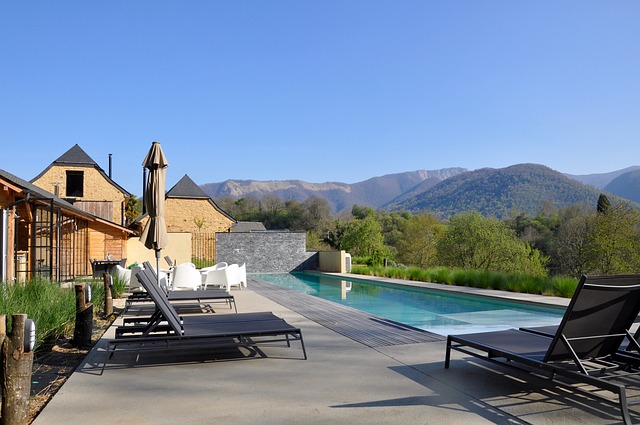If you’re looking for a vacation property in Sedona, you might be hard pressed to find one that fits within your budget. You’re not alone in this popular endeavor anymore. However, if you have the cash flow and you’re looking for a trendy investment, Sedona might just be the place for you. But what’s going on in the Sedona market that makes it so attractive for people from all over America?

Where should you look if you’re trying to solidify your equity and start building wealth fast? In this article, we’re looking at all of the best ways to find vacation homes as an investment. We’re also examining the market itself to see what you can expect in the years to come. While Sedona shows no signs of slowing down, there are always opportunities to make the most of your investment. For the sake of balance and diversification, we’re also examining some other markets that might be an attractive fit for investors looking for a property or homeowners looking for a vacation property.
No Collapse for Sedona Yet
Local Sedona real estate agents are in agreement: there isn’t much to suggest the market will collapse any time soon. Most real estate professionals feel like the increase has many years to go. But as we’ve seen in the past, speculation is a dangerous beast. Many real estate agents believe Sedona is already a luxury property market intended for buyers looking for homes over 1 million dollars. 10-15 years ago, Sedona could foster investors or vacationers looking for homes between $500,000-$700,000.
Those days are gone, in part, because of the internet (thanks, Bill Gates). When Zillow emerged and the word got out about the luxury and natural beauty of Sedona, the prices started creeping upwards. With the emergence of the vacation rental, Sedona shot up. That trend probably won’t end anytime soon. If it can endure a pandemic, the market will most likely withstand other detractors. Another reason for the skyrocketing demand is the limited supply. Before the boom, prices were reasonable. Now, most Americans know about Sedona. Retirees want to spend a few months there. Young professionals with money want to work remotely in Sedona – there are a lot of benefits driving the upward trend.
Who Are the Buyers?
The word is, a substantial portion of the buyers are from California. Many buyers are also in their 50s. During the pandemic, these buyers realized they could work remotely and they had the money to do it somewhere sunny and beautiful, like Sedona. Sedona just so happens to be an excellent place to raise a family in a safe environment, as well. 50+ year olds aren’t the only one taking advantage of the Sedona market. Young entrepreneurs who already knew about the remote option also invested a substantial amount of money into the Sedona market. WIth this influx of millennial buyers, the housing market should sustain for at least the short- term.
Most real estate agents don’t foresee a housing bubble, but why would they? It’s in their best interest to prop the market up. Still, the current state of the market lacks some of the more apparent signs of the 2008 bubble. The prevailing thought is that if there were indicators of trouble, real estate agents would be able to see the signs around a half a year in advance. Since Sedona is still a second home market, there shouldn’t be as much danger as the markets that got hit hardest in 2008.
Other Attractive Vacation Investment Property Areas
Big Sky, Montana
This “Gateway to Yellowstone” was settled by ranchers in the 1890s and it has been mostly untouched by the common hand ever since. However, as a ski destination it has been attracting attention since the early 1970s and gradually gaining steam. With an annual snowfall of around 400”, Big Sky is a global warming hot topic for skiers.
But skiing isn’t the only thing attracting investors to Big Sky anymore. The word is out for fly fishers, snowshoers, and dog sledders. With a population of 2,500, there is a ton of room for expansion, much to the dismay of conservationists and purists. Bozeman is the nearest town, around 55 miles away from Big Sky, and the list of airlines that fly to Bozeman is always increasing.
Fort Bragg, California
California is a forbidden wasteland these days, right? The tent cities, property taxes through the roof, droughts, earthquakes, who would want to live there? Wrong. Rural northern California is much different than its southern California counterpoint cities, such as Los Angeles and San Diego. It’s also different from San Francisco. We all know San Diego, Los Angeles, and San Francisco have their beauty. But we also know they have their drawbacks. Again, those property taxes… Fort Bragg is a way to enjoy the California beauty without all of the drawbacks. A California Historical Landmark, this Pacific Coast community is around 3 ½ hours away from San Francisco. Its Glass Beach, colored with stones worn down from years of erosion, is an austere beauty. If you’re still looking to exploit California’s remaining untouched beauty, give Fort Bragg a whirl.
Whittier, North Carolina
In between the Smoky Mountains and the Nantahala National Forest, Whittier, North Carolina houses around 5600 people. It is about an hour’s drive from Asheville and is also close to vacation attractions such as the activity-rich Eastern Cherokee Reservation and the Harrah’s casino – every American’s dream. Dollywood in Pigeon Forge and gem mining, hunting, fly fishing, and rafting, create an interesting mixture of events.
Davenport, Florida
Davenport boomed almost 200% in a decade, growing from just below 2,900 inhabitants to around 5,400. It is only an hour drive away from Orlando, making it ideal for any parents whose kids’ sole purpose in life is to go to DisneyLand, while allowing the parents to get away from the clownery of it all. The True Blue Winery, Providence Golf Club, and Laker Davenport can offer some much needed seclusion from DisneyLand.






